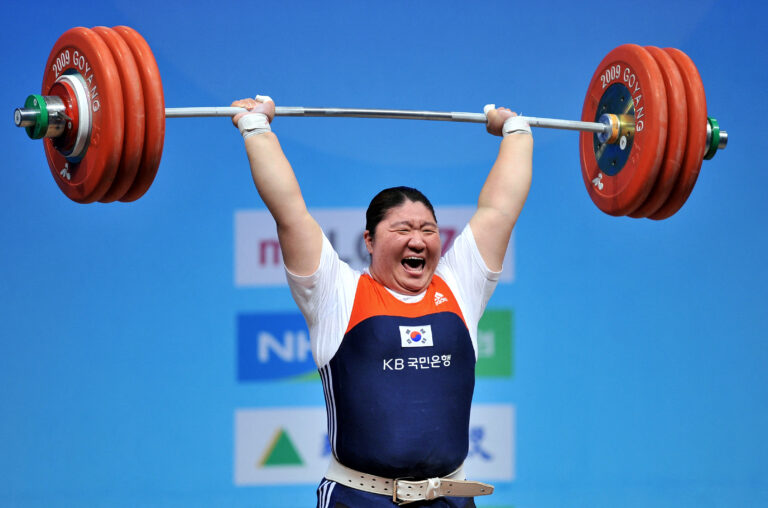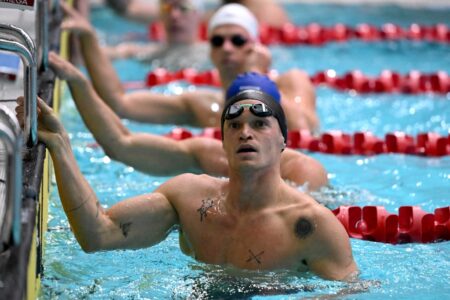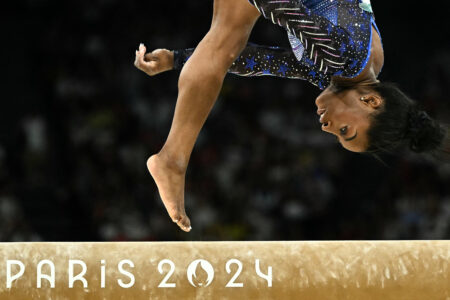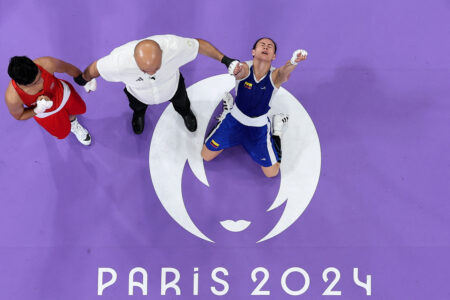
When you think of football, who comes to mind?
Likely names like Lionel Messi, Cristiano Ronaldo, Neymar, and Son Heung-min. Now, try naming four female footballers — can you do it as quickly?
Women in sports have always been overshadowed.
Beyond being depicted as weaker or less athletic than men, women have to constantly prove their worth as top competitors. Still, they remain discriminated against or even barred from playing altogether.
Take Jackie Mitchell, for example.
In 1931, at just 17 years old, Mitchell – a pitcher for the all-male Chattanooga Lookouts – famously struck out baseball legends Babe Ruth and Lou Gehrig during an exhibition game against the Yankees, as the New York Times reported.
But Mitchell’s contract with the Chattanooga Lookouts was voided instead of being celebrated. Fearing the “feminisation” of the sport, baseball formally excluded women in 1962, with Commissioner Kenesaw Mountain Landis declaring the sport “too strenuous” for women.
While opportunities for women in sports have expanded since then, inequality continues today. 30% of women were denied access to sports resources and fitness opportunities during their school years, according to a report from TALA.
Furthermore, nearly half (47%) of these women were not allowed to play rugby, and 41% were restricted from participating in football.
Even in pop culture, the struggle is apparent.
Amanda Bynes’s movie “She’s the Man” portrays a world where women are denied opportunities in sports and face scrutiny for wanting to play. Viola, Bynes’s character’s football team, was disbanded due to a lack of funding, and she had to disguise herself as her brother just to continue playing.
At one point, she’s even forced to flash the boys’ team to prove she’s a woman. While it’s meant to be a movie to show that women can play football, it reflects the lengths women must go for equal opportunity in sports.

Caitlin Clark has been described as one of the greatest women’s college basketball players of all time by many publications. Her impact on the women’s game is likened to that of Stephen Curry on the men’s game. Source: AFP
Setbacks female athletes face almost all the time
In 2014, women participated in 40% of sports, yet only 4% of all sports media coverage (outside of the Olympics) focused on women, according to research from the University of Minnesota’s Tucker Centre for Research on Girls and Women in Sport.
Similarly, women’s sports in the US receive just 15% of media coverage, despite women making up nearly half of collegiate and professional athletes. If you exclude college sports, the number drops to just 8%.
According to the Victoria State Government and Isentia, coverage of women’s sports primarily emphasises results and performance. However, deeper analysis – such as training routines, team dynamics, and player personalities – is often reserved for men’s sports.
Female athletes are less likely to have a platform to advocate for their sports, diminishing their visibility and further widening the gap in representation. The Olympics remain one of the few moments when female athletes share the spotlight.
Even then, the sexualisation often undermines their accomplishments.
In 2021, NBC reported that the Norwegian women’s beach handball team was fined US$1,700 for wearing shorts instead of the mandated bikinis, a situation highlighting the objectification of women athletes.

Serena Williams has won 23 grand slams, more than any man or woman in the sport. She also holds the title of the world’s highest-paid female athlete. Source: AFP
It’s no secret that women in sports earn way less than men
Beyond media representation, women in sports face significant financial inequality. Low salaries, lack of team funding, and inadequate travel expenses limit their progress.
Consider basketball.
The WNBA’s highest-paid player earns US$242,200, while the NBA’s top player makes US$51.9 million. The NBA’s minimum salary for a player with one year of experience is US$1.5 million – six times more than the highest-paid WNBA player.
Golf reveals a similar inequality. As of 2024, the highest-paid female golfer has earned US$22.5 million in career earnings, while her male counterpart received US$185.7 million.
UK football is no exception. Male football players in the UK earn up to US$520,355 per week, while female players make roughly the same amount over a year.
Tennis is one of the rare sports where pay equality is almost achieved, with male players earning an average of US$1.5 million compared to female players’ US$1.039 million. Yet even this tiny victory shows how other sports still have a long way to go.
Why women should be given roles in sports
Despite the challenges, many women are standing up against discrimination in sports, working to create a safer and fairer environment for future generations of athletes.
A 2023 Deloitte study found that 85% of the surveyed women who played sports are likelier to be in leadership or management roles in their professional careers.
Here’s proof:
- Japan’s late House of Councillors member, Kiyoko Ono, is a former gymnast.
- South Korea’s second Vice Minister of Culture, Sports and Tourism, Choi Yun-hui, is a former swimmer.
- France’s former Minister of Sports, Laura Flessel-Colovic, was a fencer.
- Croatia’s member of parliament, Sandra Perković, is a former discus thrower.
In addition to leadership roles, female athletes now serve as role models and advocates for young girls and aspiring athletes worldwide. Their presence inspires and opens doors for the next generation.
For instance, Singaporean footballer Danelle Tan, who plays for Brisbane Roar, strongly advocates for women in sports. “As an athlete and a role model, I understand the responsibility of using my platform to bring about change,” she says.
Tan has made several media appearances, sharing her journey in football and pushing for more opportunities for girls to participate in the sport.
Increasingly, women in sports are also finding a space in academia while pursuing their athletic dreams – especially those competing in traditionally male-dominated sports. This combination of athleticism and academic achievement sets an example of resilience and determination for young female athletes around the globe.
4 women in male-dominated sports with a master’s or a PhD degree
1. Jang Mi-Ran, weightlifter
- Bachelor’s in Physical Education from Korea University
- Master’s in Physical Education from Sungshin Women’s University
- Master’s in Sports Administration from Kent State University
- PhD in Physical Education from Yong In University
Jang Mi-Ran is a retired South Korean weightlifter and one of the most accomplished athletes in Olympic weightlifting history. She earned a gold medal at the 2008 Beijing Olympics, a silver medal at the 2004 Athens Olympics, and a bronze medal at the 2012 London Olympics.
Jang also set a then-world record total of 326kg and later shattered individual world records by lifting 140kg in the snatch and 186kg in the clean and jerk.
After retiring in 2013, Jang transitioned to academia. She became a professor at Yong In University in 2016 but left in 2017 to pursue a master’s degree in the US. Upon completing her studies, she rejoined the Yong In faculty in 2021. In July 2023, Jang was appointed Second Vice Minister of Culture, Sports, and Tourism in South Korea’s 13th administration.

Anna Kiesenhofer is one of the few athletes in the mathematical field but left to pursue her athletic dream. Source: AFP
2. Anna Kiesenhofer, cyclist
- BSc in Technical Physics and BSc in Mathematics in Science and Technology from the Vienna University of Technology
- Master of Advanced Study in Mathematics from the University of Cambridge
- PhD in Applied Mathematics from the Polytechnic University of Catalonia
Anna Kiesenhofer is an Austrian professional cyclist who made history by winning gold in the women’s road race at the 2020 Tokyo Olympics despite being the only Austrian representative in the 137km event. In addition to her Olympic success, Kiesenhofer has competed in the Tour de Il’Ardèche, Coupe d’Espagne, and various other prestigious races.
Beyond her athletic career, Kiesenhofer holds a PhD in mathematics, completing a thesis on integrable systems on b-sympletic manifolds. She was a postdoctoral fellow at the École Polytechnique Fédérale de Lausanne (EPFL) for four years. Kiesenhofer focuses full-time on professional cycling while continuing to inspire through her dual talents in academia and sport.
3. Leila Ben Youssef, pole vaulter
- BSc in Human Biology with a Minor in Anthropology from Stanford University
- Master’s in Medical Anthropology from Stanford University
- Doctor of Medicine (MD) from the University of Washington School of Medicine
Leila Maryam Ben Youssef is a Tunisian-American pole vaulter with dual citizenship who chose to represent Tunisia, her father’s homeland, in international competitions. Youssef has achieved significant success, winning gold medals at the Pan Arab Games and the All-Africa Games, but fell short of a podium finish at the 2008 Beijing Olympics.
After her athletic career, Youssef pursued a medical career. She completed her residency in emergency medicine at Alameda County Medical Center-Highland, where she worked for 10 years. Today, she practices emergency medicine in Hawaii and volunteers as a pole vault coach at a local high school.

Ogona Nnamani Silva is one of the most decorated indoor volleyball players ever in Stanford University’s history, with a career record of 2,450 kills, for which she entered the Stanford Hall of Fame in 2015. Source: AFP
4. Ogonna Nnamani Silva, volleyball
- BSc in Human Biology from Stanford University
- Doctor of Medicine from the University of California, San Francisco
- Plastic Surgery Residency Programme from Harvard Medical School
Ogonna Nnamani Silva is a retired American indoor volleyball player and former Olympian. She became the second woman in history to make the US national volleyball team for the Olympics while still in college. Over her career, she won one gold, five silver, and four bronze medals in various competitions, establishing herself as a key figure in US volleyball.
After retiring from professional sports, Silva pursued a medical career and is now a resident physician in Harvard University’s Plastic and Reconstructive Surgery programme. She is also a motivational speaker for organisations such as Nike, Gatorade, the Women’s Sports Foundation, Honda, and the National Football Foundation.










